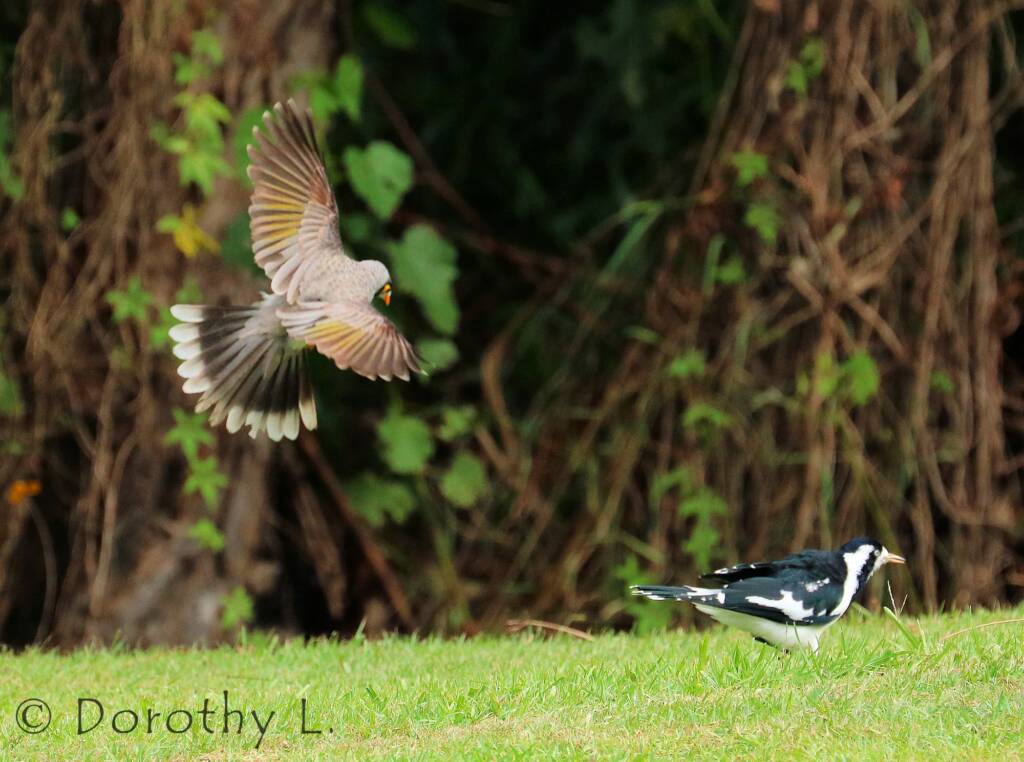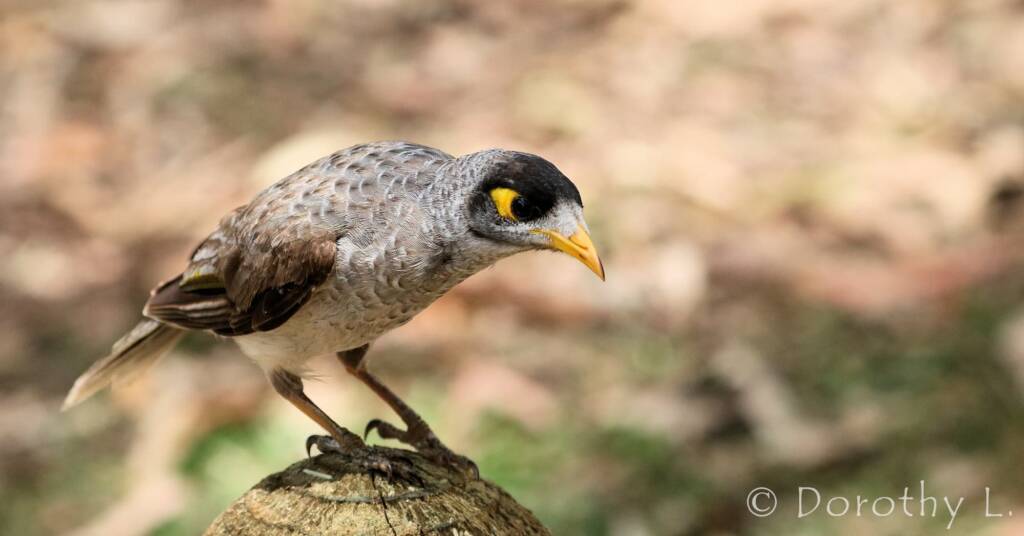HoneyeatersBlue-faced Honeyeater Brown Honeyeater Brown-headed Honeyeater Crescent Honeyeater Eastern Spinebill Grey-fronted Honeyeater Grey-headed Honeyeater New Holland Honeyeater Noisy Miner Pied Honeyeater Red Wattlebird Scarlet Honeyeater Singing Honeyeater Spiny-cheeked Honeyeater White-plumed Honeyeater Yellow-throated Miner Yellow-tinted Honeyeater Yellow-tufted Honeyeater
A member of the honeyeater family Meliphagidae, the Noisy Miner (Manorina melanocephala) is endemic to eastern and south-eastern Australia.
The Noisy Miner is identified by its mostly grey body, black crown and cheeks, naked yellow skin behind the eye and the slightly different shade of yellow bill. The Tasmanian race has a more intense yellow panel in the wing, and a broader white tip to the tail.

A bold and curious bird, the Noisy Miner is a vocal species with a range of songs and vocalisations, especially among the younger birds. Whilst this may be a problem, the bigger issue is their impact on other bird species in the area. Problems arise when there is a dramatic increase in their population, especially in areas favoured by us humans. A notably aggressive bird that can squabble amongst their own colony, they will also fight and chase away other birds. They are know to drive out other species of birds from the habitat they are in.
One of four species in the genus Manorina, in the honeyeater family Meliphagidae, whose other members include the Black-eared Miner (M. melanotis), the Yellow-throated Miner (M. flavigula), and the Bell Miner (M. melanophrys). The members of this genus have a characteristic patch of bare yellow skin behind the eyes and within this genus are the sub-genus Myzantha that contain the Noisy Miner, Black-eared Miner and Yellow-throated Miner.

The main range of the Noisy Minor starts from the Far North Queensland, through New South Wales, Victoria and south-eastern South Australia, as well as Tasmania.
They primarily inhabits dry, open eucalypt forests, including woodlands habitats that are dominated by spotted gum, box and ironbark. They also inhabit farmland and grazing areas, urban parks and gardens, reserves that have trees and grass, that have little to no dense shrubbery.

- Scientific classification
- Kingdom: Animalia
- Phylum: Chordata
- Class: Aves
- Order: Passeriformes
- Family: Meliphagidae
- Genus: Manorina
- Species: M. melanocephala
- Binomial name: Manorina melanocephala
Footnote & References
- Noisy Miner, Australian Museum, https://australian.museum/learn/animals/birds/noisy-miner/
- Noisy Miner (Manorina melanocephala), BirdLife Australia, https://www.birdlife.org.au/bird-profile/noisy-miner
- Native or not, it’s time to cull noisy miners, Ockham’s Razor with Tegan Taylor, ABC, https://www.abc.net.au/radionational/programs/ockhamsrazor/sue-taylor-cull-noisy-miner/7418506
HoneyeatersBlue-faced Honeyeater Brown Honeyeater Brown-headed Honeyeater Crescent Honeyeater Eastern Spinebill Grey-fronted Honeyeater Grey-headed Honeyeater New Holland Honeyeater Noisy Miner Pied Honeyeater Red Wattlebird Scarlet Honeyeater Singing Honeyeater Spiny-cheeked Honeyeater White-plumed Honeyeater Yellow-throated Miner Yellow-tinted Honeyeater Yellow-tufted Honeyeater
